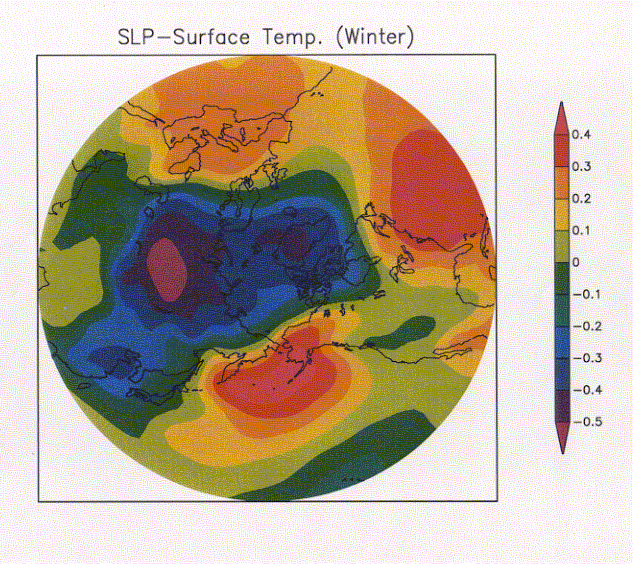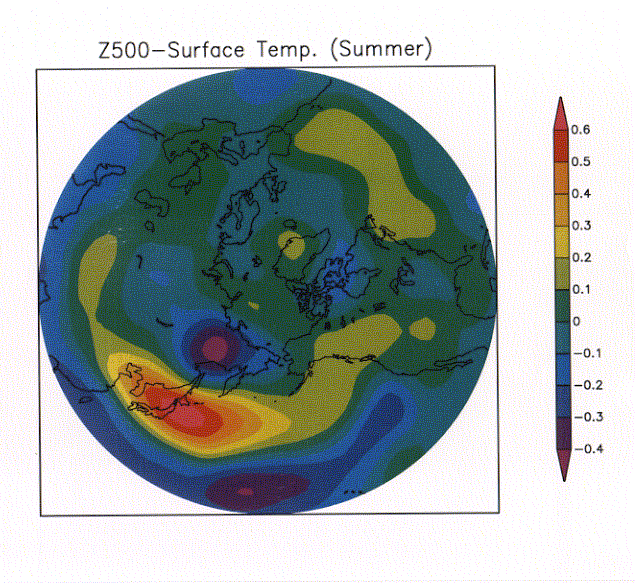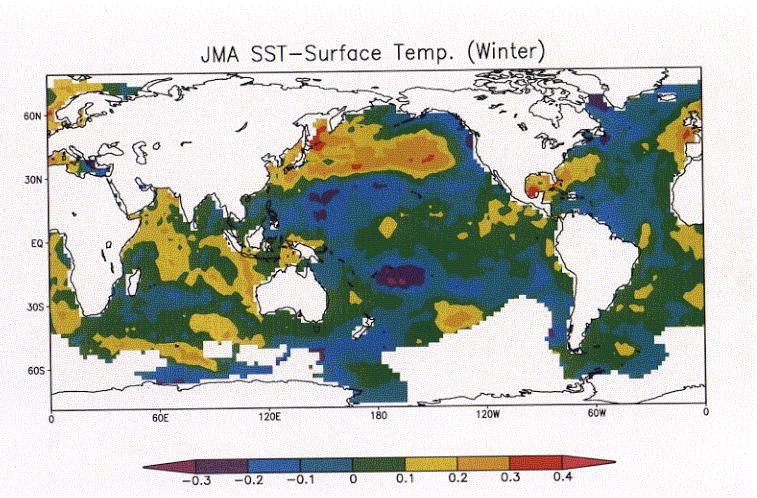What Governs the Climate of Hokkaido?
Winter Climate and Arctic Oscillation
From observational stations around Hokkaido we chose 5 locations that had been little influenced by urbanization (Wakkanai, Abashiri, Nemuro, Urakawa, and Suttsu) and used them to perform the analysis below. The bottom-left figure is a correlation coefficient distribution map for winter air temperatures in Hokkaido and sea-level pressures. When atmospheric pressure is low in the arctic, and high for the Atlantic and the northern region of the North Atlantic, the result is a mild winter. Other than that, weak Siberian high and Aleutian low-pressure systems are also correlated with mild winters. This kind of distribution of atmospheric anomalies corresponds with so-called Arctic oscillation patterns midair. The bottom-right figure, often used as an indicator of winter air temperature for Hokkaido and the entire troposphere, is a correlation coefficient distribution map between 500h Pa heights. It shows that a mild winter results when an arctic high is low (i.e. low atmospheric pressure), and when the Atlantic Ocean or northern North Pacific Ocean heights are high (i.e high atmospheric pressure). Pattern of Arctic oscillation is clearly seen in the pressure at the sea-level.


The graph below shows the Arctic oscillation index (AO index) and temperature variations for Sapporo (red) and Nemuro (green). It is clearly understood that the air temperature of Hokkaido and the AO index change parallel each other.

Summer Climate of Hokkaido and the Okhotsk High-Pressure System
The figure below shows the distribution map of the correlation coefficients for summer air temperatures and sea-level pressures in Hokkaido (left), and 500 hPa heights (right). Summer differs from winter in that there is a clear positive correlation found from central Japan to the Pacific Ocean, and a negative correlation for the Okhotsk Sea. This indicates that when height at central Japan to Pacific Ocean is high, and high pressure at the Sea of Okhotsk is weak, it will be a hot summer. The relationship with Arctic Oscillation is not clear.


The Climate of Hokkaido and Sea Surface Temperature
The figure below shows the relationship between Hokkaido air temperature and global sea surface temperature. For winter (top) or summer (bottom), there is a clear positive correlation between the air temperature for Hokkaido and the surface temperature of the surrounding ocean. This positive correlation extends eastward in winter. Moreover, it is interesting to note that there exists a negative correlation with the surface temperature of Japan’s southern sea. There is no significant correlation with the eastern equatorial Pacific Ocean region where El Nino occurs during winter or summer. This demonstrates that there is no direct strong relationship between Hokkaido’s climate and El Nino.


References
Drivers of Hokkaido Climate Variations – Koji Yamazaki


